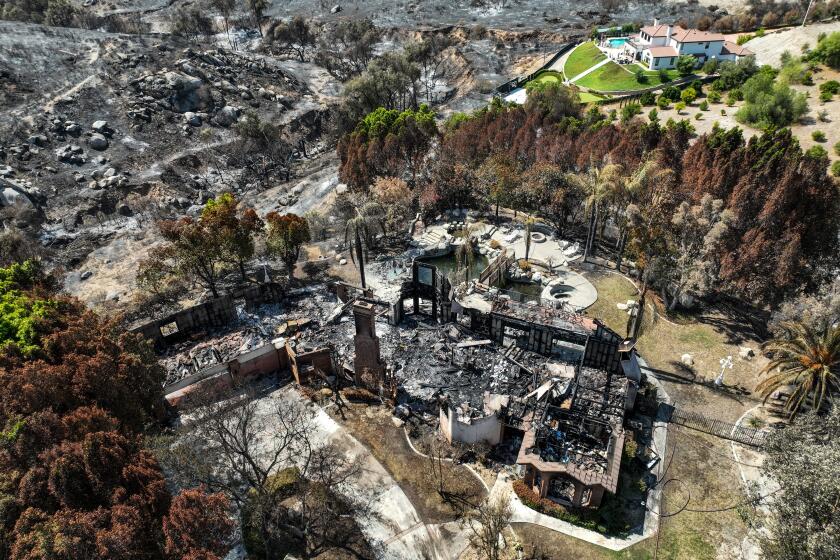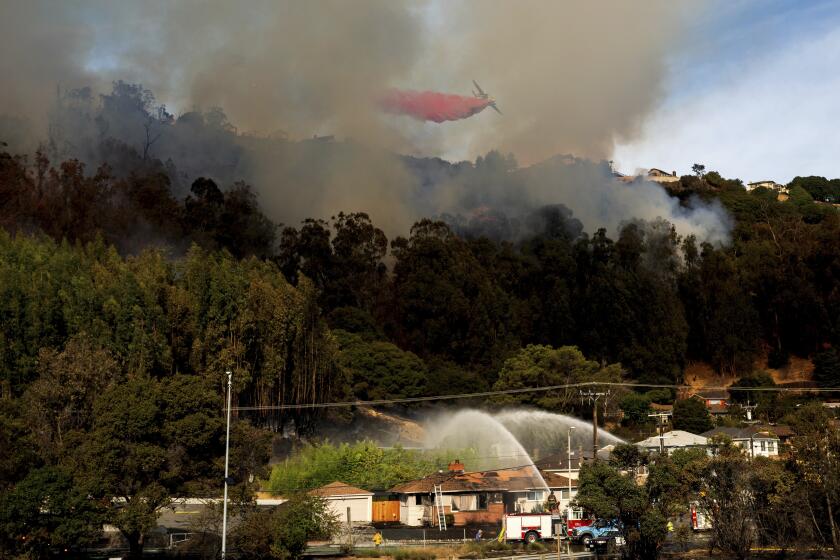California wildfires are spreading and intensifying faster, putting more people in danger

- Share via
Just from what they’ve experienced over the years, California residents may suspect that wildfires have gotten more extreme amid a warmer and more drought-prone climate.
A new paper in the journal Science puts that sentiment to the test, with startling findings: California fires spread almost four times faster in 2020 than they had in 2001.
The study, authored by scientists from the University of Colorado, UC Merced and UCLA, also found that across the West, fires grew 250% more quickly in 2020 than they did in 2001.
“People are pretty good at putting out all fires,” said Park Williams, a UCLA professor and co-author of the study, but “the faster the fire, the more easily it can escape control.”
The insurance industry will soon have the ability to use wildfire models when setting rates. Homeowners in high risk areas already know how these models have made policies hard to get and hard to afford.
Although intuitive, the relationship between the speed at which a fire spreads and the damage it causes to structures and land was difficult to quantify until recent developments in satellite technology, he said.
Now, scientists can plot “trends in the daily growth rates,” he said. Using daily fire spread imagery for some 60,000 fires from 2001 to 2020, they were able to determine a relationship between damage and speed, Williams said.
“During this 20-year study period, fires in the U.S. did indeed on average begin moving faster,” he said. The 3% of fires with the fastest daily growth rates made up around 90 percent of property loss in the two decades studied.
“In California more than most places in the U.S., people are being confronted with the changes in fire behavior,” Williams said.
Many Californians live in close proximity to flammable vegetation and are put increasingly in harm’s way.
Weather conditions are improving for firefighters across California as they fight fires.
The study gave several possible explanations for the increase in fire speed.
“Fires may be growing faster due to warming trends, vegetation transitions to more flammable fuels, or the co-occurrence of high winds with increasing human-related ignitions,” the study posited.
Recent wildfires in California have caused death and destruction and brought the home insurance industry to the brink of crisis. With the 2024 fire season ending, all eyes will be on next year.













